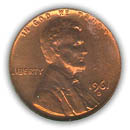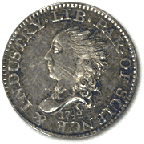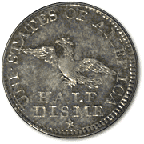(Fallbrook, CA) – Officials of the Professional Numismatists Guild (PNG), a non-profit organization composed of the nation’s top rare coin dealers, are advising consumers that recently-minted coins privately plated with a microscopically-thin layer of gold or platinum should only be viewed as mementos or souvenirs, and not as investments in precious metals.
The PNG is praising a nationally-televised investigative report about sales of plated coins for raising public awareness about the difference between the booming market for rare coins and advertisements for common, modern coins privately altered after they were minted. A segment on the May 12, 2006 broadcast of “Inside Edition,” stated: “Some TV shopping shows are using slick sale pitches to sell coins to unsuspecting consumers at inflated prices.”
PNG President Jeff Garrett of Mid-America Rare Coin Galleries of Lexington, Kentucky, says with the recent boom in precious metals prices many people have a basic misconception that adding a tiny amount of gold or platinum to an otherwise common coin significantly raises its value. It doesn’t.
“There is very little precious metal value to a plated coin. As a dealer, I frequently have to break the bad news to people who come to my store to sell the plated coins they’ve purchased elsewhere. They usually are astounded, then saddened, to learn their plated, commemorative state quarter-dollars are worth little more than 25 cents each,” said Garrett.
On the “Inside Edition” broadcast, PNG member-dealer, Scott Travers of New York City, author of The Coin Collector’s Survival Manual, warned: “The only kind of investments these are, are bad investments. Serious collectors normally steer clear of plated coins because these are viewed as having their surfaces altered after leaving the Mint.”
PNG Legal Counsel, Armen Vartian of Manhattan Beach, California, cautions: “When buying coins sight-unseen from private retailers, it’s particularly important to ask whether the coins have been authenticated independently, namely by someone other than the retailer.”
In the PNG’s consumer protection pamphlet, “What You Should Know Before You Buy Rare Coins,” the section on modern coins advises: “If you like the subject theme represented by these coins, admire the beauty of the design or would like to own them as a souvenir or to show support for their particular cause, by all means buy them. But if your goal is capital appreciation or making a profit, you’re better off avoiding this type of material.”
Professional Numismatist Guild members must adhere to a strict Code of Ethics and demonstrate knowledge, responsibility and integrity in their business dealings. They also must agree to binding arbitration to settle unresolved disagreements over numismatic property.
For a copy of the informative pamphlet, “What You Should Know Before You Buy Rare Coins,” send $1 to cover postage costs to: Robert Brueggeman, PNG Executive Director, 3950 Concordia Lane, Fallbrook, CA 92028. Phone: 760-728-1300. E-mail: info-at-pngdealers.com or visit the web site at www.PNGdealers.com.


